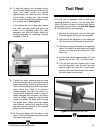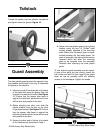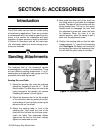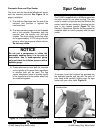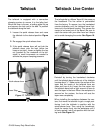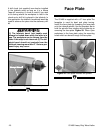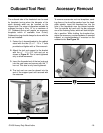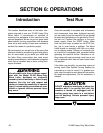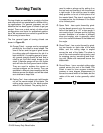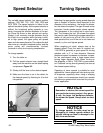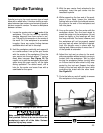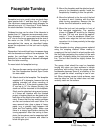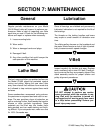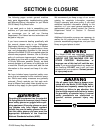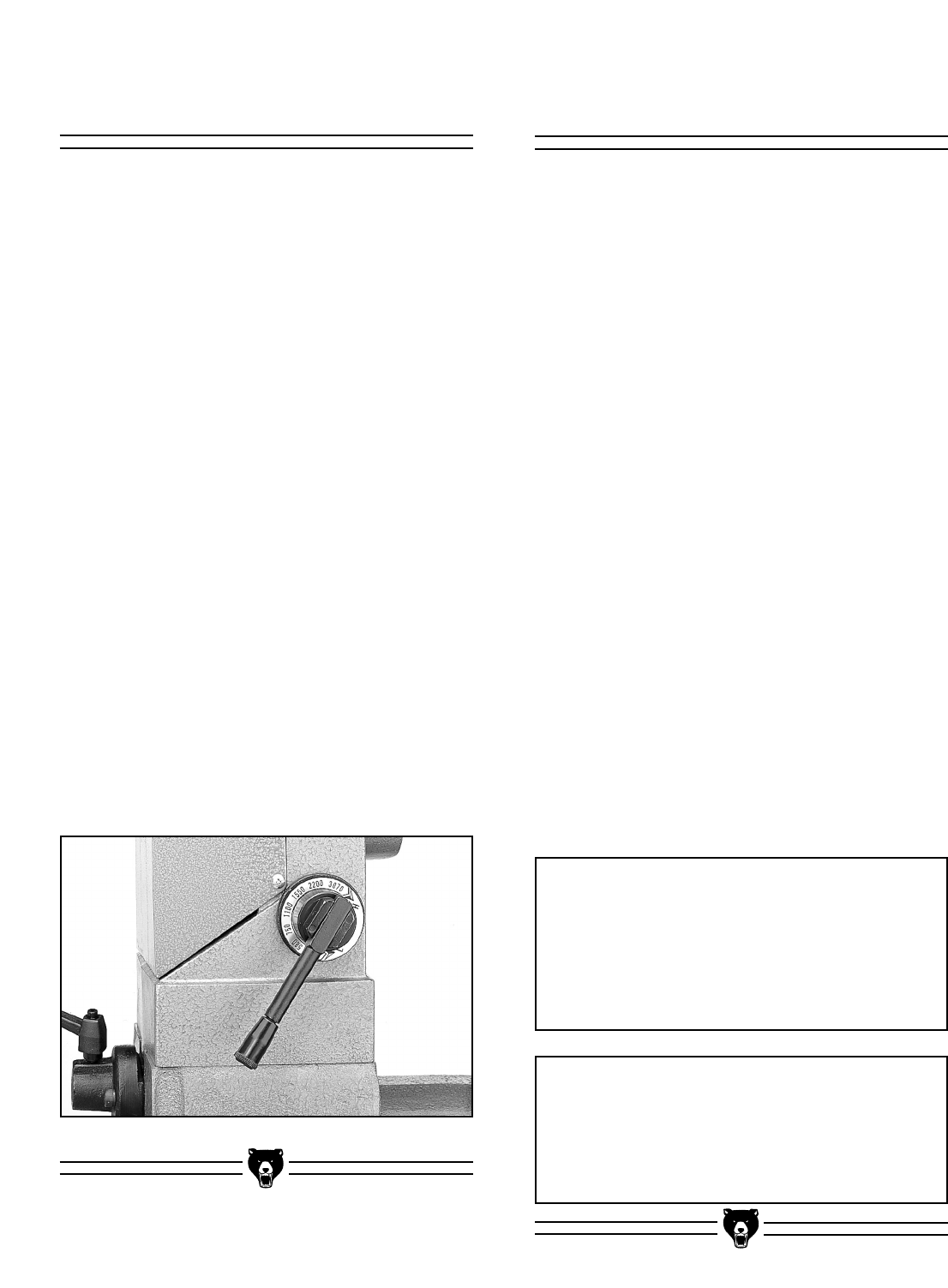
-22-
G1495 Heavy-Duty Wood Lathe
Selecting the appropriate turning speed depends
upon a number of factors. Most important is the
diameter of the workpiece - the larger the diame-
ter, the slower the speed.The type of wood is also
important, harder woods require slower speeds.
The sharpness of the cutting tool is also impor-
tant. The sharper the tool, the slower the speed
that can be used. Selecting the proper speed is a
matter of trial and error at first. Start out with a
slow speed at first, and if the cut is not clean and
smooth, try the next highest speed.
When roughing out stock, always start at the
slowest speed. Once the work is roughed out,
1100 RPM is generally a good speed for turning
spindles with a 2'' or less diameter. Because
peripheral speed increases as diameter increas-
es, we recommend using a lower speed when
turning larger diameter stock. When turning on
the faceplate, a 580 or 750 RPM is recommend-
ed. Outboard turning should generally be done at
the slowest speed setting.
Operating at lower speeds is suitable for most
applications. Lower speeds will also prolong chis-
el sharpness, especially when using a scraping
cut. Under no circumstances should you operate
this lathe at a speed which is too fast for your par-
ticular application.
Turning Speeds
NOTICE
Remember to choose the correct speed for
your particular turning project. As a gener-
al rule, the larger the workpiece diameter,
the slower the speed. Always start on slow
speed.
NOTICE
To change speeds, the lathe must be on.
Attempting to change speeds without the
spindle turning can result in damage to the
belt drive mechanism.
Speed Selector
Figure 24. Speed selector in slowest speed
The variable speed selector has seven position
settings - 500, 580, 750, 1100, 1550, 2200 and
3070 RPM. The speed selector is linked to the
splined headstock pulley. As the speed selector is
shifted, the headstock pulley expands or con-
tracts, changing the effective diameter of the pul-
ley. Since the motor is also splined and spring-
loaded, it will inversely change diameter due to
the V-belt. As an example, when the lever is shift-
ed to high speed, the upper pulley will spread
apart and decrease diameter.This makes the belt
now move on a smaller headstock pulley, and the
motor pulley will simultaneously contract
(increase in size) due to spring compression.
To change speeds:
1. Turn the lathe on.
2. Pull the speed selector lever straight back
away from the machine so the detent spring
compresses. Figure 24.
3. Slowly shift the lever to the desired speed.
4. Make sure the lever is set in the detent for
the desired speed, by listening for it to click
into position.



